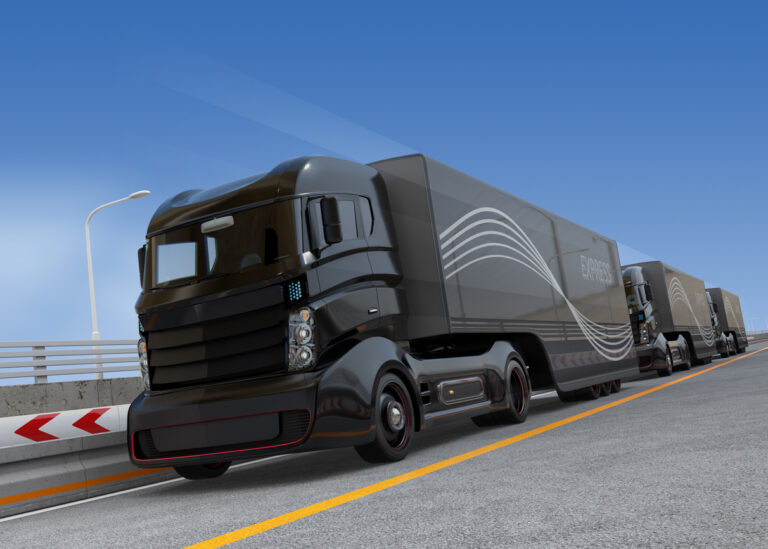BOSTON — The autonomous truck industry is experiencing a revival after the initial hype, with vehicle delivery numbers continuously breaking records.
According to a release issued by IDTechEx, companies in Asia, Europe, and the United States are eagerly entering the commercialization testing phase. Autonomous trucks are addressing real-world problems by saving transportation costs and optimizing Total Cost of Ownership (TCO) through practical calculations. By 2044, it is expected that the global trucking fleet will be supported by an additional half a million L4 autonomous drivers, while the remaining drivers will either act as supervisors or work in less developed regions. The autonomous truck industry is projected to have an annual growth rate of 25.6% over the next 20 years. This is one of the key findings from the new IDTechEx research report, “Autonomous Trucks 2024-2044: Technologies, Trends, Forecasts”.
Pain points in the commercialization of autonomous trucks
Trucks have long been regarded as having great potential in commercializing autonomous driving systems. Compared to robotaxis and other mobility-service-oriented autonomous platforms, companies do not need to focus as much on user experience or integration within society. The purpose of autonomous driving systems in trucks is to address several critical issues within the industry, with driver management being the most prominent. Unstable social conditions and COVID-19 have deterred many from becoming truck drivers. Many young people are reluctant to spend their lives on the road when homeworking has become a viable way to build a career. The aging population exacerbates the labor shortage, making waning driver numbers cause a bottleneck in land transportation. Fewer drivers mean carriers are forced to increase wages to attract new and suitable drivers, thus raising operating costs.
Safety is another crucial consideration in the trucking industry. According to “Intelligent Safety White Paper for China’s Road Freight Industry,” there are 3.7 accidents per million kilometers in China’s freight industry – equivalent to one traffic accident per driver every 16 months. The annual insurance payout is about RMB 30,000 per vehicle (US$4,286), with 37% of accidents attributed to driver error and 35% related to the lack of assisting equipment. Data from the Federal Motor Carrier Safety Administration indicates that heavy-duty trucks and buses in the United States have 0.1 accidents per million kilometers, with 1% being fatal. The significant disparity arises from differences in road traffic infrastructure between western and eastern China, differences in management regulations between developed and underdeveloped areas, and reduced insurance costs and personal injury compensation.
Using autonomous long-haul trucks has the potential to reduce the number of accidents, as autonomous driving systems do not get distracted and can facilitate more efficient and effective communication with other vehicles or devices. IDTechEx’s new report delves deep into the pain points of commercializing autonomous trucks, highlighting the reasons why the industry is choosing autonomy.
The commercialization path of autonomous trucks
In 2024, autonomous truck companies are actively conducting commercial testing in the hope of addressing the paint points listed above. After studying more than ten of the largest autonomous truck companies, IDTechEx has outlined two main commercialization paths. These paths are influenced by government regulations on autonomous vehicle testing in various countries, with some regions providing detailed policy support specifically for autonomous trucks.
Path 1: Stepping from L2 to L4
Led by Inceptio, the first path involves gradually upgrading the in-vehicle autonomous driving system from Level 2 (L2) to Level 4 (L4). The goal is to utilize L2 advanced driver assistance systems (ADAS) to pave the way for commercialization and gather real-world data to prepare for L4 autonomous driving systems. Although L2 cannot replace drivers, it can alleviate fatigue, extend driving distances, and enhance safety. In the Chinese market, carriers can drop from two drivers to just one on longer routes thanks to the convenience and safety available from L2-L3 ADAS trucks.
Path 2: Establishing High-Quality L4 Fixed Routes
The second path focuses on establishing high-quality L4 fixed routes (called “hub-to-hub”) for short-distance (200-400 miles) autonomous or unmanned transportation. Sweden’s Einride is a notable example of a company doing this, with three route plans in the UK, Norway, and Sweden. Companies need to pre-plan the routes for downstream transportation customers and set up related auxiliary facilities along the way to ensure the smooth operation of L4 autonomous driving. As an electric truck company, Einride has designed an autonomous driving network called “Grids” to address fleet optimization, tractor swaps, and battery management optimizations. Einride is already operating independently in Europe and the United States.
IDTechEx’s report provides an in-depth analysis of these two commercialization paths and offers region-specific and market-specific forecasts.
IDTechEx believes that at the current stage, L4 autonomous trucks require more efficient route planning to reduce uncertainties along the way, thus improving the quality of the Operational Design Domains (ODD). The L4 hub-to-hub transport can consolidate cargo from multiple clients and maximize the use of the same ODD for L4 level transportation. This approach can save vehicle energy and enhance vehicle utilization.
Bruce Guthrie is an award-winning journalist who has lived in three states including Arkansas, Missouri and Georgia. During his nearly 20-year career, Bruce has served as managing editor and sports editor for numerous publications. He and his wife, Dana, who is also a journalist, are based in Carrollton, Georgia.








